Remember when any review of a new hybrid car almost always included at least a couple of bad jokes about patchouli-scented owners, or how they came equipped with one-handed steering wheels so the driver could use the other one to pat themselves on the back?
That was because, in the earliest days of the technology, hybrid cars were almost aways unforgivably ugly, and it felt like you were rabbit-punching yourself in your driving soul every time you climbed behind the wheel of one.
And so the only people who ever really bought them were those willing to look past all those drawbacks and instead focus on the green-cred having one parked on their driveway would deliver.
But there will be no such jokes today. Because Hyundai’s new Ioniq hybrid isn’t any of those things.
It’s rather handsome, in fact. And it’s plenty zippy, too. Most important, though, if it wasn’t for the occasional rumble of the petrol engine taking over duties from the electric motor, it’s very possible to forget you’re driving a hybrid at all.
Hyundai Ioniq 2018: Electric Elite (black Grille)
| Engine Type | 0.0L |
|---|---|
| Fuel Type | Electric |
| Fuel Efficiency | 0.0L/100km (combined) |
| Seating | 5 |
| Price From | $17,600 - $22,220 |
| Safety Rating |
|
Does it represent good value for the price? What features does it come with?
Well, that remains something of a mystery for now. Hyundai is in the midst of what it’s calling a “soft launch” - a kind of toe-dipping exercise to gauge pubic and government interest in its Ioniq range, which includes the hybrid we’ve driven here, as well as a plug-in hybrid, and a full-electric model.
So far, there are just 42 cars in the country, all of which have been placed with Hyundai’s fleet customers ahead of a full-scale launch around August. The brand has confirmed, though, that all three versions of the Ioniq will be landing in Australia.
So far, Hyundai is keeping a lid on specific pricing, but the smart money is on a circa-$31k starting point for the hybrid range, adding dollars as you change to plug-in or full-EV models.
.jpg)
Our test car, a Hybrid Premium (which will likely sit above a cheaper, entry-level hybrid), arrived ferociously well-equipped. Outside, think dusk sensing bi-xenon headlights with LED DRLs, courtesy and puddle lights, automatic wipers and a smart key with proximity unlocking. Inside, there’s dual-zone climate, navigation, a huge sunroof, and leather seats that are both heated and cooled in the front.
Tech duties are handled by an Apple CarPlay/Android Auto-equipped 8.0-inch (and split-screen) touchscreen that pairs with an eight-speaker stereo.
Is there anything interesting about its design?
We’re a tad smitten with it, to be honest. At least from the front, where a wide, silver-slatted grille takes up plenty of real estate, stretching sideways to join the slim and swept-back headlights and vertical DRLs. It’s a premium front-end treatment, and it looks very good on this hybrid.
.jpg)
The rear three-quarter view isn’t quite so sharp, though. With slippery aerodynamic function clearly taking precedent over styling form, there’s a touch of the old Prius in the liftback-style design.
Inside, our test car was like an ode to grey, with the colour of the seats near-matching that of the dash and door panelling. I’d be optioning a little more contrast, but the touchpoints all have a quality feel to them, and the ambiance is only improved by the soft and flat-bottomed steering wheel that feels lovely in your hands.
.jpg)
So, the hybrid touches: the driver’s binnacle display is made up of three gauges - a dial which shows you how much battery you’re using at any one time, the battery and petrol gauges, and a speedo - and there’s an air-con feature that allows you to only activate the driver’s zone to save power. Oh, and there's a foot-operated parking brake (so beloved by US drivers), which feels weirdly old-school in such a tech-savvy car.
How practical is the space inside?
At 4470mm long and 1820mm wide, Hyundai’s Ioniq is about on-par with Toyota’s Prius (4540mm long, 1760mm wide), and serves up an impressive amount of space for passengers in either row.
.jpg)
Up front, expect two cupholders, along with two 12-volt outlets, two USB connection points and a wireless charging pad for your compatible phone. There’s room in each of the doors for bottles, and a deep central storage bin for extra items.
Climb into the back seat, and it does feel tighter than expected, given each door-trim moulding extends into the window seats, but at my 175cm, I had ample leg and headroom.
.jpg)
There is a net on the rear of the passenger seat, and two cupholders that live in the pull-down divider that separates the back row, as well as two ISOFIX attachment points. Back seat riders do get air-con vents, but no temperature controls, and there are no USB points or power outlets, either.
The boot opens to reveal a high-load space, with a full-size spare wheel hidden below the shelf. There is 563 litres (VDA) on offer if you’re willing to stack your luggage to the roof, swelling to 1518 litres with the rear seats folded flat.
.jpg)
What are the key stats for the engine and transmission?
The Ioniq’s 1.6-lire, four-cylinder engine serves up 77kW/147Nm, but the addition of an electric motor lifts combined outputs to 104kW/265Nm.
.jpg)
They pair with a six-speed dual-clutch automatic (complete with utterly inexplicable paddle shifters), shuffling power to the front wheels.
How much fuel does it consume?
The claimed fuel consumption is 3.9 litres per hundred kilometres on the combined cycle, and after treating it very, very unkindly, the on-board computer said we were using 6.1L/100km. Emissions are a claimed 92g/km of C02. For the record, Toyota claims 3.4L/100km for the Prius hybrid.
The Ioniq’s 45-litre tank will accept cheap-as-chips 91RON fuel, which is a very good thing.
What's it like to drive?
If the mark of a good eco-friendly car is that you’re not constantly reminded that you’re driving one (and it really should be), then Hyundai’s Ioniq gets full marks.
Despite a relatively modest power output being used to shift its circa-1.4-tonne kerb weight, it’s really pretty perky when you first plant your foot, albeit after a short pause while the gearbox gathers its wits. And there’s enough in-gear punch to ensure you won’t be checking your life insurance policy is up to date before pulling out to overtake.
Vision out of most windows is excellent, though the rear view is impeded by a bar that splits the glass into two sections, and in-cabin tech - including the touchscreen that will show you two functions at once - was flawless.
For mine, though, it doesn’t feel quite as polished as some of Hyundai’s other products on the road, feeling a little jerkier and a little more skittish from behind the wheel than, say, the i30 Premium. But it’s something you soon get used to, and you adjust accordingly.
The steering is inner-city light, without much dead air in the centre, and the ride irons out most bumps without too much bother. But there was some noticeable tyre noise in the cabin on certain road surfaces.
Oh, and it’s got a Sport button, which makes the accelerator so super sensitive you need to treat it like it’s transformed into a cobra, but we abandoned it for the more comfortable Eco mode pretty quickly.
Warranty & Safety Rating
What safety equipment is fitted? What safety rating?
It’s difficult to report on the full safety offering across the range until we see the full specifications, but I can report the Hybrid Premium version arrives with a commendable list of kit, including seven airbags, a parking camera, front and rear sensors and a tyre-pressure monitor.
Hyundai’s 'SmartSense' is also standard at this level, adding AEB with pedestrian detection, blind-spot detection, forward collision warning, lane keep assist, active cruise and rear cross-traffic alert.
The Ioniq received the maximum five-star Euro NCAP safety rating when tested in 2016.
What does it cost to own? What warranty is offered?
Expect the Hyundai Ioniq to be covered by Hyundai’s five-year/unlimited km warranty, with roadside assist offered throughout.
While the specific prices haven’t been announced, the Ioniq should also fall under Hyundai’s extensive capped-price servicing scheme.
Verdict
Not content with cutting the hot-hatch grass with its fresh-out-the-box N Performance range, Hyundai now has the green market firmly in its sights with the new Ioniq family. And having just spent a week behind the wheel, Australia’s long-standing hybrids should be looking over their eco-friendly shoulders.
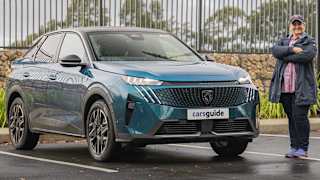
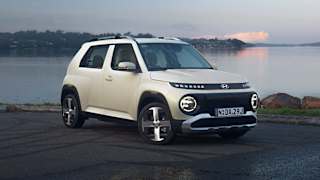

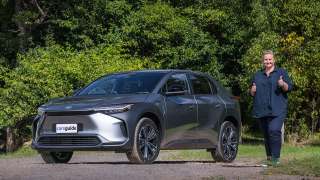


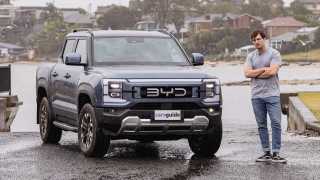

.jpg)




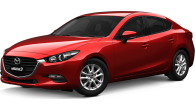
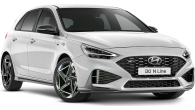
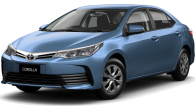
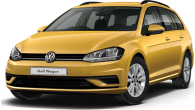













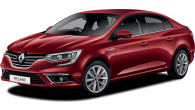
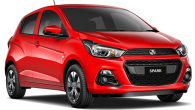
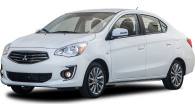






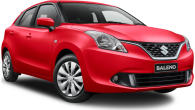





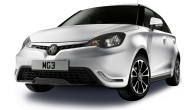



.jpg)



.jpg)